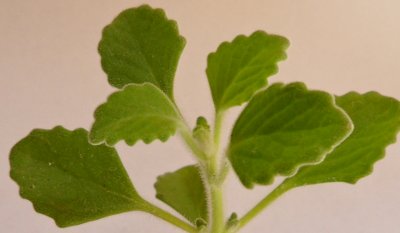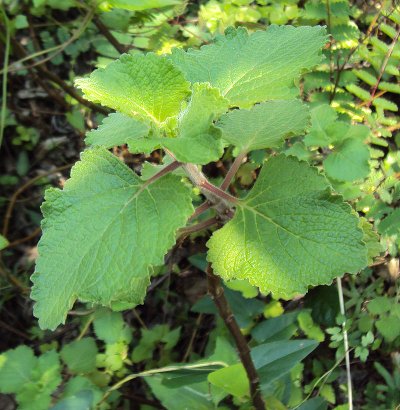Vick's Plant
 Common Names: Vicks plant, Cuban oregano.
Common Names: Vicks plant, Cuban oregano.
Scientific Name: Plectranthus oloroso, tomentosa o hadiensis
Climate: Frío, templado y calido.
Plant Description: It is an herbaceous, creeping or upright plant. It has quadrangular stems with small leaves growing opposite, usually with serrated edges. It produces purple flowers. It grows up to a height of 50 cm.
Cultivation: It can be grown from seeds, but the most common and easiest way is from stem cuttings. To harvest the seeds, the flowers must be allowed to dry on the plant. The seeds are sown directly in seedbeds with a mix of sand, silt or black earth. For reproduction by cuttings, branches about eight or ten centimeters long are taken from the new shoots. The cuttings should be cut just below the node so that two or three leaf clusters remain, eliminating the lowest leaves. This is done before the rainy season.
 Although it requires a moderate amount of water, it can withstand droughts well. It doesn't need much light, prefering medium shade, and grows well under trees in food forest.
Although it requires a moderate amount of water, it can withstand droughts well. It doesn't need much light, prefering medium shade, and grows well under trees in food forest.
Uses: The leaves can be placed in boiling water and the characteristic vapors are then inhaled, helping to clear the nasal passages and breathing apparatus.
The leaves can also be prepared in Vaseline-based ointments and applied to relieve skin irritation from insect bites.
Pests and Diseases: The plant is affected by the cottony mealybug. If the infestation is not severe, they can be removed with a cotton swab dipped in alcohol. It is also affected by aphids. They are insects that if not kept under control can cause serious damage to the plant. Fungi generally occur on plants that are kept in low light and hot and humid conditions, especially in winter.
References:
https://worldofsucculents.com/plectranthus-hadiensis-tomentosus-vicks-plant/
En español: Vaporub
